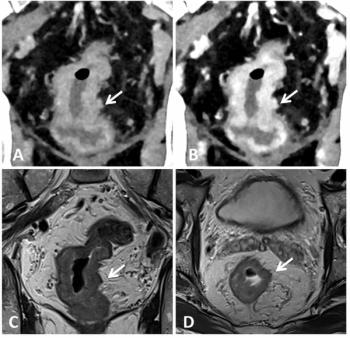
Luminal Water Imaging for Prostate Cancer Detection
Magnetic resonance measurement of luminal water in prostate gland in detection and grading of cancer.
Luminal water imaging may aid in the detection and grading of prostate cancer, according to a study published in
Researchers from Canada performed a small prospective study to assess the feasibility of luminal water imaging, a quantitative T2-based MR imaging technique, for the detection and grading of prostate cancer
Eighteen patients (median age of 65.5) with biopsy-proven prostate cancer underwent 3 T MR imaging shortly before radical prostatectomy. T2 distributions were generated with a regularized non-negative least squares algorithm from multiecho spin-echo MR imaging data. From T2 distributions, maps of seven MR parameters, Ncomp, T2short, T2long, geometric mean T2 (gmT2), luminal water fraction (LWF), Ashort, and Along, were generated and compared with digitized images of hematoxylin-eosin–stained whole-mount histologic slices. A paired t test was used to determine significant differences between MR parameters in malignant and nonmalignant tissue. Correlation with Gleason score (GS) was evaluated with the Spearman rank correlation test. Diagnostic accuracy was evaluated by using logistic generalized linear mixed-effect models and receiver operating characteristic (ROC) analysis.
The results showed the average values of gmT2, Ashort, Along, and LWF parameters were significantly different between malignant and nonmalignant tissue. All MR parameters except for T2long showed significant correlation with GS in the peripheral zone. The highest correlation with GS was obtained for LWF. The ROC analysis demonstrated high accuracy for tumor detection, with the highest area under the ROC curve obtained for LWF (0.97 in the peripheral zone and 0.98 in the transition zone).
The researchers concluded that this pilot study demonstrated the feasibility of luminal water imaging in the detection and grading of prostate cancer. They recommended that another study with a larger cohort of patients and a broader range of GS is required to further evaluate the new technique in clinical settings.
Newsletter
Stay at the forefront of radiology with the Diagnostic Imaging newsletter, delivering the latest news, clinical insights, and imaging advancements for today’s radiologists.



























